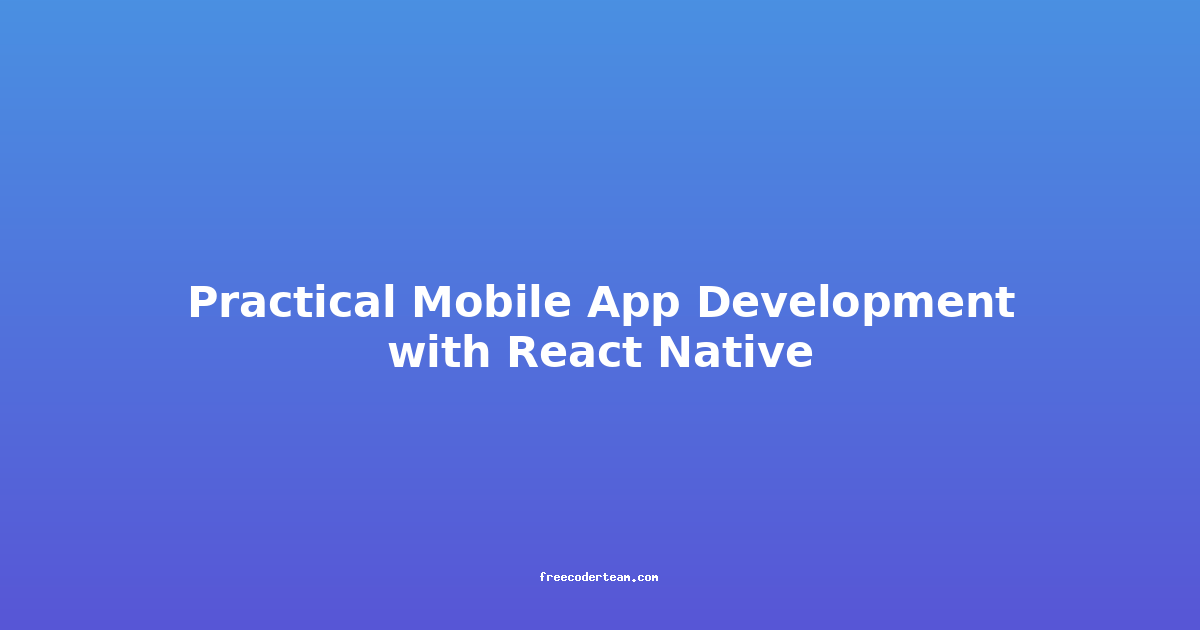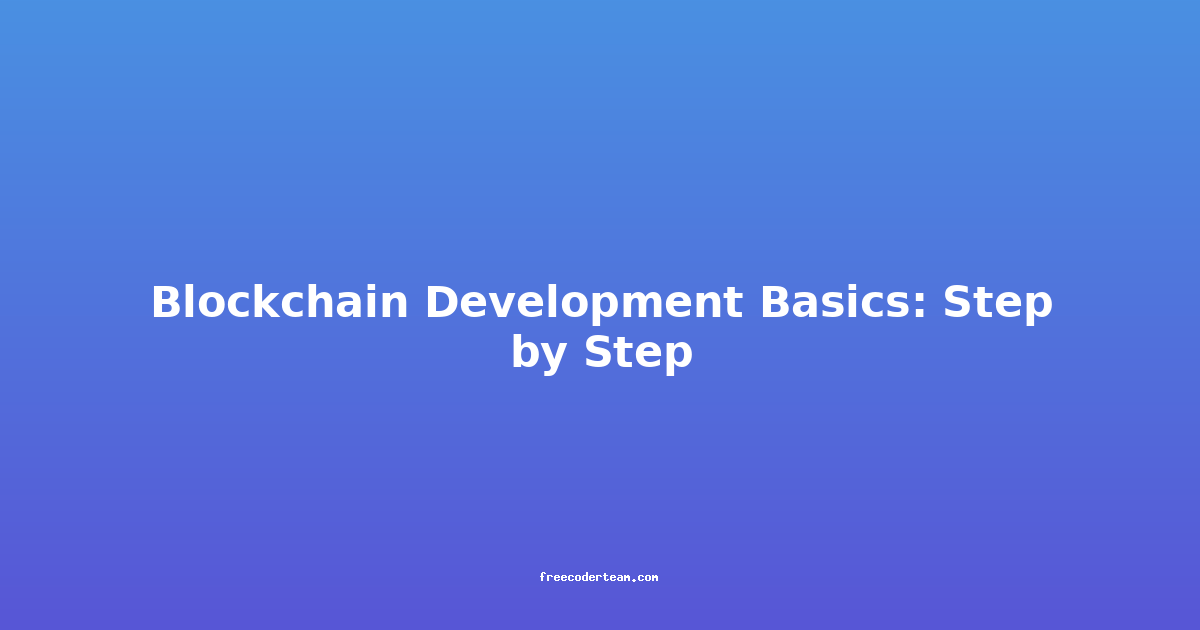Level Up Your Mobile App Game: A Practical Guide to React Native Development
In the ever-evolving landscape of mobile app development, choosing the right framework can be a game-changer. Enter React Native, a powerful open-source framework developed by Meta (formerly Facebook) that's taken the industry by storm.
React Native empowers developers to build truly native mobile applications for both iOS and Android using a single codebase. This translates to significant time and cost savings, faster development cycles, and a consistent user experience across platforms.
This blog post dives deep into the world of React Native, exploring its core concepts, best practices, and practical examples to help you get started on your mobile app development journey.
Understanding React Native: The Basics
React Native leverages the power of JavaScript and React, a popular JavaScript library for building user interfaces.
Key Features:
-
Native Performance: React Native utilizes native components, allowing your app to feel and perform just like a native app.
-
Code Reusability: Write once, deploy everywhere! React Native's "write once, run anywhere" philosophy lets you share a significant portion of your codebase between iOS and Android platforms.
-
Hot Reloading: Experience real-time code updates without restarting the app, significantly speeding up development and debugging.
-
Large and Active Community: Benefit from a vast and supportive community of developers, providing ample resources, tutorials, and solutions to common challenges.
React Native Components:
React Native uses components, similar to HTML elements, to build the user interface. These components are pre-built and optimized for native platforms, ensuring a seamless look and feel.
import React from 'react';
import { View, Text, StyleSheet } from 'react-native';
const App = () => {
return (
<View style={styles.container}>
<Text style={styles.title}>Welcome to React Native!</Text>
</View>
);
};
const styles = StyleSheet.create({
container: {
flex: 1,
backgroundColor: '#fff',
alignItems: 'center',
justifyContent: 'center',
},
title: {
fontSize: 24,
fontWeight: 'bold',
},
});
export default App;
Getting Started with React Native
Setting up your development environment is straightforward. Follow these steps:
-
Install Node.js and npm: React Native relies on Node.js and its package manager, npm. Download and install the latest version from the official website: https://nodejs.org/
-
Install React Native CLI: Use npm to install the React Native Command Line Interface (CLI):
npm install -g react-native-cli
- Create a New Project:
react-native init MyFirstApp
- Start the Development Server: Navigate to your project directory and run:
npm start
This will launch the development server and open your app in a simulator or on a connected device.
Building Engaging User Interfaces
React Native provides a rich set of pre-built UI components that you can customize to create stunning and responsive interfaces.
Common Components:
- View: The fundamental building block for layout, similar to a
<div>in HTML. - Text: Displays text content.
- Image: Renders images.
- Button: Interactive button for user actions.
- TextInput: Allows users to input text.
Styling:
React Native uses a JavaScript-based styling system similar to CSS. You can define styles using inline styles or separate style sheets.
// Inline styles
<Text style={{ color: 'red', fontSize: 18 }}>Hello!</Text>
// Style sheet
const styles = StyleSheet.create({
header: {
backgroundColor: '#f0f0f0',
padding: 20,
},
title: {
fontSize: 24,
fontWeight: 'bold',
},
});
<View style={styles.header}>
<Text style={styles.title}>My App Title</Text>
</View>
Navigating Between Screens
React Navigation is a popular library for handling navigation in React Native apps. It provides a declarative way to define navigation routes and transitions.
Basic Navigation:
import { NavigationContainer } from '@react-navigation/native';
import { createStackNavigator } from '@react-navigation/stack';
const Stack = createStackNavigator();
const App = () => {
return (
<NavigationContainer>
<Stack.Navigator>
<Stack.Screen name="Home" component={HomeScreen} />
<Stack.Screen name="Details" component={DetailsScreen} />
</Stack.Navigator>
</NavigationContainer>
);
};
Connecting to APIs
React Native allows you to seamlessly connect to APIs to fetch and display data. You can use libraries like fetch or axios to make API requests.
import axios from 'axios';
const fetchData = async () => {
try {
const response = await axios.get('https://api.example.com/data');
console.log(response.data);
} catch (error) {
console.error(error);
}
};
Best Practices for React Native Development
-
Modularization: Break down your app into reusable components to improve maintainability and code organization.
-
State Management: Utilize state management libraries like Redux or Context API to handle complex application state efficiently.
-
Performance Optimization: Optimize your app by minimizing unnecessary re-renders, using efficient animations, and leveraging native modules.
-
Testing: Write comprehensive unit tests and integration tests to ensure the quality and stability of your code.
Conclusion
React Native empowers developers to build high-quality, cross-platform mobile applications with a single codebase. By leveraging its powerful features, best practices, and the vibrant community support, you can bring your mobile app ideas to life and deliver exceptional user experiences.
This guide provides a solid foundation for your React Native journey. Explore the official documentation, experiment with code examples, and continuously learn to unlock the full potential of this versatile framework.




